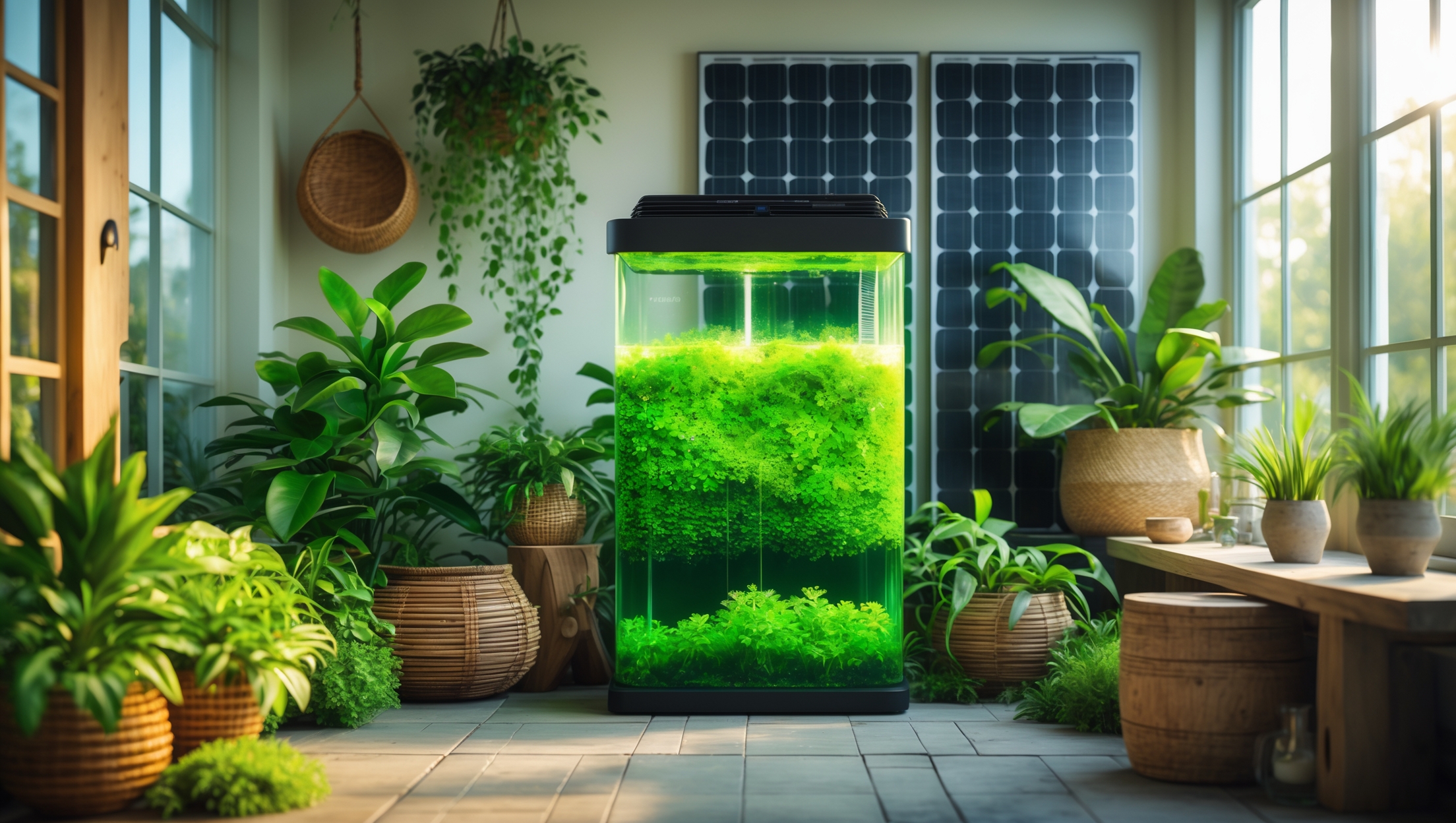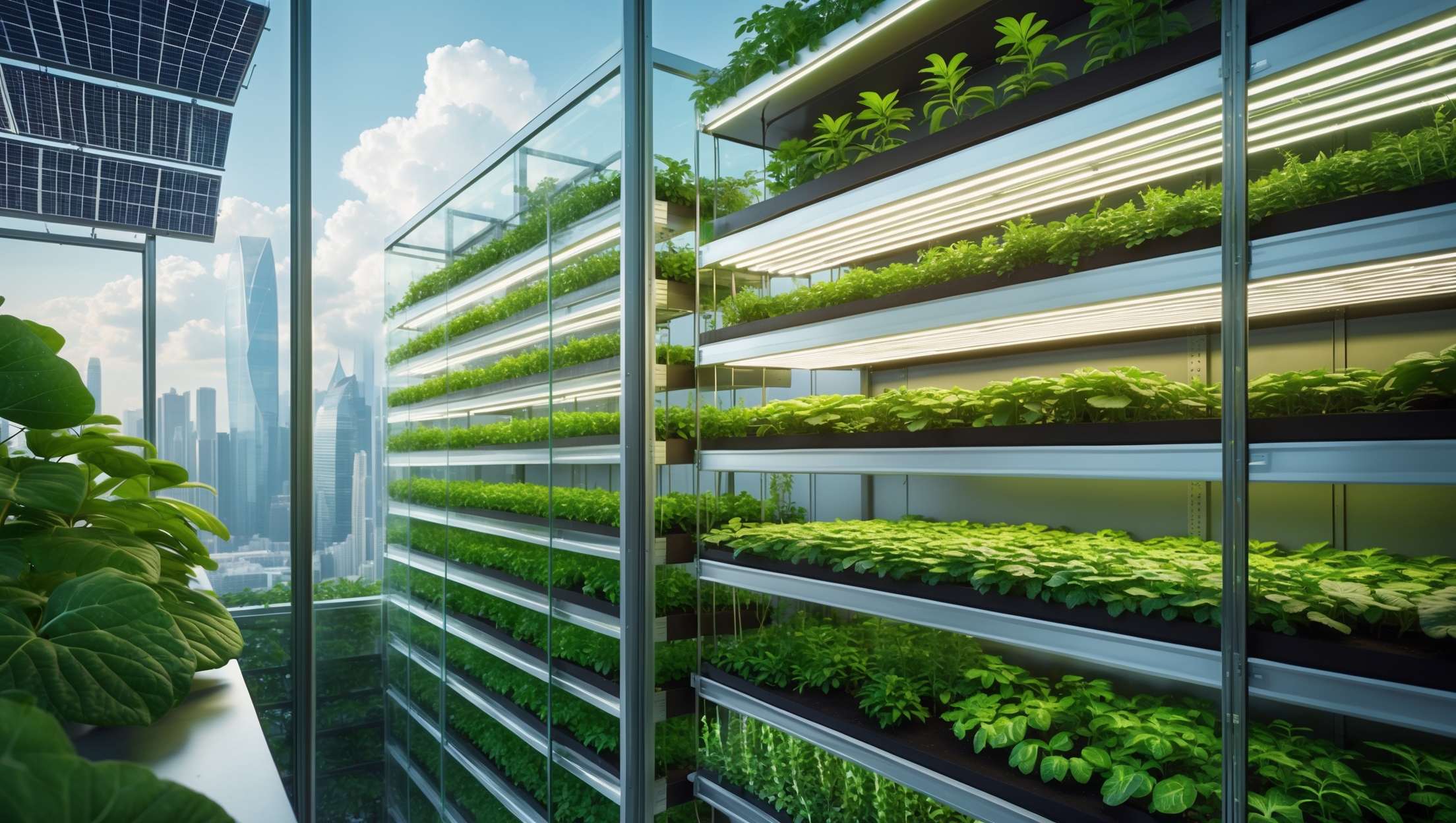Introduction: Setting the Record Straight on Home-Scale Algae Bioreactors
From rooftop solar panels to backyard wind turbines, the world of sustainable living is brimming with innovation. Yet, one green technology often shrouded in misconception is the home-scale algae bioreactor. Promising carbon capture, biofuel production, and even air purification, these compact systems might seem like science fiction or a commercial pipe dream. But how much of what you’ve heard is fact—and how much is fiction?
This article peels back the layers of hype and hearsay surrounding home algae bioreactors. We’ll debunk the most persistent myths, explain the true potential and limitations of these systems, and provide practical, actionable advice for eco-conscious homeowners. Whether you’re a sustainability enthusiast, a curious DIYer, or a green tech advocate, understanding the realities behind home-scale algae bioreactors is crucial for informed decision-making and meaningful environmental impact.
Let’s dive in and separate the science from the speculation so you can confidently assess if this green technology has a place in your sustainable future.
What Are Home-Scale Algae Bioreactors?
Defining the Technology
A home-scale algae bioreactor is a contained system—usually a tank, tube, or series of vessels—where algae are cultivated under controlled conditions. By providing light, nutrients, and CO2, these reactors enable algae to grow rapidly, absorbing carbon dioxide and producing oxygen during photosynthesis. The resulting biomass can be used for a range of applications, from compost and animal feed to biofuel and fertilizer.
How They Work
- Light Source: Natural sunlight or LED grow lights provide the energy for photosynthesis.
- CO2 Input: Ambient air or direct CO2 injection boosts algae growth.
- Nutrients: A solution of water and essential minerals sustains the culture.
- Mixing and Aeration: Pumps or air stones keep the culture well-mixed and oxygenated.
- Harvesting: Mature algae are removed and processed for intended uses.
Myth #1: Home Algae Bioreactors Can Power Your Entire House
The Truth About Energy Yields
While algae are among the most efficient organisms at converting sunlight and CO2 into biomass, the scale required to produce household-scale biofuel is significant. A typical home bioreactor, occupying a few square meters, can generate modest amounts of biomass suitable for supplements, fertilizer, or small-scale projects—but not enough to replace your grid electricity or heating needs.
For context, producing just one liter of algal biodiesel requires several kilograms of dry biomass. Home units typically yield a few hundred grams per month. Industrial-scale reactors, spanning hundreds of square meters, are needed for meaningful energy production.
Myth #2: Algae Bioreactors Are “Set and Forget” Systems
Maintenance Requirements
Some promotional materials suggest that algae bioreactors are entirely self-sustaining. In reality, maintaining healthy, productive cultures requires ongoing attention:
- Monitoring water quality: pH, temperature, and nutrient levels must be checked regularly.
- Cleaning components: Biofilm and debris accumulate on surfaces, impacting efficiency.
- Preventing contamination: Competing microorganisms can overrun cultures if not managed.
- Harvesting: Regular removal of biomass is essential for continued growth.
Most hobbyist setups require weekly maintenance, while automated systems can reduce—but not eliminate—the workload.
Myth #3: Any Algae Species Will Do
Choosing the Right Strain
Not all algae are created equal. Some strains excel in high-yield environments, while others may be better suited for specific end uses. For home bioreactors, the most popular choices are:
- Spirulina: High in protein, commonly used for supplements and animal feed.
- Chlorella: Fast-growing, good for air purification and biomass.
- Nannochloropsis: High lipid content, suitable for small-scale biofuel experiments.
Choosing a strain well-suited to your local climate, light availability, and intended use is critical for success.
Myth #4: Algae Bioreactors Instantly Purify Indoor Air
CO2 Capture in Context
Algae are effective at absorbing CO2, but the rates achieved by small home units are modest. For example, a 50-liter home bioreactor may capture about 0.05–0.2 kg of CO2 per week—far less than the output from daily human activities in a household. While every bit helps, expecting a home unit to dramatically improve indoor air quality or offset your entire carbon footprint is unrealistic.
However, when used alongside other green technologies, algae bioreactors can play a meaningful role in a holistic sustainability strategy.
Myth #5: Algae Bioreactors Are Too Expensive for Home Use
Breaking Down the Costs
While high-end, automated systems can cost thousands of dollars, functional DIY setups can be assembled for under $300 using off-the-shelf materials:
- Clear tanks or tubes: $30–$100
- Grow lights (if needed): $40–$100
- Air pumps and stones: $20–$40
- Nutrient mix and starter culture: $20–$50
- Miscellaneous (tubing, timers, sensors): $30–$60
Operating costs are minimal—mainly electricity for lights and pumps, and periodic nutrient additions. Many hobbyists repurpose aquarium supplies and household containers, further reducing expenses.
Automated monitoring and harvesting add convenience but are not required for effective operation at the home scale.
Myth #6: Algae Bioreactors Are Only for Scientists
Accessibility for the DIY Community
While commercial and research-scale bioreactors can be complex, home systems are well within the reach of motivated DIYers. Online resources, open-source plans, and active hobbyist forums make it possible to build, operate, and troubleshoot your own algae reactor with basic tools and a willingness to experiment.
Starter kits are also available, offering plug-and-play solutions for beginners. As with any DIY project, patience and continuous learning are key to overcoming challenges and optimizing performance.
Myth #7: Algae Bioreactors Are Maintenance Hazards
Safety and Best Practices
Algae bioreactors are generally safe when operated properly. Key considerations include:
- Electrical safety: Use waterproof connections and GFCI outlets for pumps and lights.
- Water containment: Prevent leaks and spills, especially if placing units indoors.
- UV exposure: Some setups use UV sterilization—avoid direct exposure to skin and eyes.
- Biohazard concerns: Only use non-toxic, food-grade algae strains; avoid collecting wild algae.
With basic precautions, algae bioreactors pose little risk to household occupants or pets.
Realistic Benefits of Home-Scale Algae Bioreactors
1. Educational Value
Operating a home algae bioreactor is a hands-on way to learn about photosynthesis, carbon cycling, and biotechnology. These systems are popular in classrooms and STEM programs for their educational impact.
2. Supplement and Fertilizer Production
Algae biomass is rich in nutrients, making it valuable as a soil amendment, animal feed, or dietary supplement (with safe strains like spirulina). This can offset household gardening and pet care costs.
3. Small-Scale Air Purification
While not a replacement for ventilation or filtration, algae bioreactors can incrementally improve indoor air by absorbing trace amounts of CO2 and releasing oxygen.
4. Contribution to Research and Innovation
Hobbyist and community-scale algae cultivation helps advance research in sustainable biofuels, wastewater treatment, and carbon sequestration—paving the way for larger-scale adoption.
Practical Considerations for Setting Up a Home Algae Bioreactor
Site Selection
Choose a location with access to natural or artificial light, stable temperatures, and minimal foot traffic. Many users opt for sunrooms, greenhouses, or garages. If using LEDs, ensure adequate ventilation to dissipate heat.
System Design
Popular home-scale designs include:
- Photobioreactor tubes: Vertical or horizontal clear tubing for efficient light exposure.
- Flat-panel reactors: Thin, wall-mounted tanks for easy integration into living spaces.
- Bubble columns: Simple tanks with air stones for mixing and aeration.
Each design has trade-offs in terms of light penetration, ease of cleaning, and scalability.
Startup and Operation
- Inoculate: Add your chosen algae strain to the filled reactor with nutrients.
- Monitor: Check pH, temperature, and growth daily during the first few weeks.
- Harvest: Use filtration, settling, or centrifugation to collect biomass.
- Clean: Disassemble and clean components every few weeks to prevent buildup.
Frequently Asked Questions
How much light do home algae bioreactors need?
Algae require 10–16 hours of light per day. Natural sunlight is ideal, but full-spectrum LEDs are effective, especially in low-light climates. Excessive heat can inhibit growth, so monitor temperatures closely.
Can I use household waste as a nutrient source?
Some advanced setups use diluted greywater or compost tea, but commercial nutrient mixes are more predictable and safer for beginners. Avoid using unprocessed waste, which can introduce contaminants.
What can I do with the harvested algae?
Safe, food-grade strains (like spirulina) can be consumed as a dietary supplement. Other uses include composting, soil amendment, pet or fish feed, and experimental biofuel production.
Conclusion: The Real Role of Home Algae Bioreactors in Sustainable Living
Home-scale algae bioreactors are not magic bullets for energy independence or carbon neutrality. They cannot power your entire house, eliminate all indoor CO2, or function indefinitely without maintenance. However, they do represent an exciting, hands-on approach to sustainable technology that can supplement household sustainability efforts, provide educational enrichment, and contribute to broader innovation in green energy.
By debunking common myths and setting realistic expectations, homeowners can make informed choices about integrating algae bioreactors into their eco-friendly routines. Whether as a source of supplements, a living science experiment, or a small step toward a greener home, these systems exemplify the spirit of innovation driving the sustainable living movement.
As research and technology advance, the efficiency and scalability of algae bioreactors will continue to improve. In the meantime, home-scale systems offer a window into the future of green technology—one that’s accessible, engaging, and full of potential for those willing to get their hands (a little) green. If you’re ready to experiment, learn, and contribute to a more sustainable world, a home algae bioreactor could be a rewarding addition to your eco-toolkit.





The article mentions that a home-scale algae bioreactor can produce biofuel, compost, and even animal feed. How much algae biomass can you realistically expect to harvest from one of these systems in a typical suburban home, and is it actually enough to make a difference in household energy use?
In a typical suburban home, a small-scale algae bioreactor can yield about 0.5 to 2 kilograms of dry algae biomass per week, depending on factors like available sunlight, bioreactor size, and maintenance. While this is enough to supplement compost or provide a minor amount of animal feed, it’s generally not sufficient to power an entire household with biofuel. However, it can make a modest contribution and serve as a valuable educational or sustainability project.
Can you explain more about the harvesting process mentioned? Is it something that a homeowner could realistically do themselves, or does it require special equipment or expertise?
The harvesting process for home-scale algae bioreactors usually involves filtering or straining the algae from the water once it has grown to a dense enough concentration. Many DIY setups use simple mesh, cloth, or fine sieves for this step, so it’s definitely something a homeowner can do without specialized equipment. Some knowledge of basic hygiene and handling is helpful, but you don’t need advanced expertise. The main consideration is keeping everything clean to avoid contamination.
Since these systems rely on light sources like sunlight or LEDs, have you found any noticeable differences in algae growth rates or energy efficiency between the two approaches for residential setups?
Sunlight generally supports faster algae growth and is more energy-efficient since it doesn’t require extra electricity, making it ideal for residential setups with good sun exposure. LED lighting can offer control over light cycles and wavelengths, but it typically leads to higher energy costs and slower growth rates compared to natural sunlight. For most home users, maximizing natural sunlight is both cost-effective and productive.
You mention both sunlight and LED grow lights as options for providing energy. Is one method more effective than the other in terms of algae growth rate or operational costs for a home setup?
Sunlight is typically the most cost-effective option for home algae bioreactors since it’s free and widely available. However, growth rates can fluctuate with weather and daylight hours. LED grow lights offer more consistent light and can boost growth rates, especially in areas with limited sunlight, but they increase electricity costs. If maximizing growth year-round is important, LEDs might be better, but for lower operational costs, sunlight is the way to go.